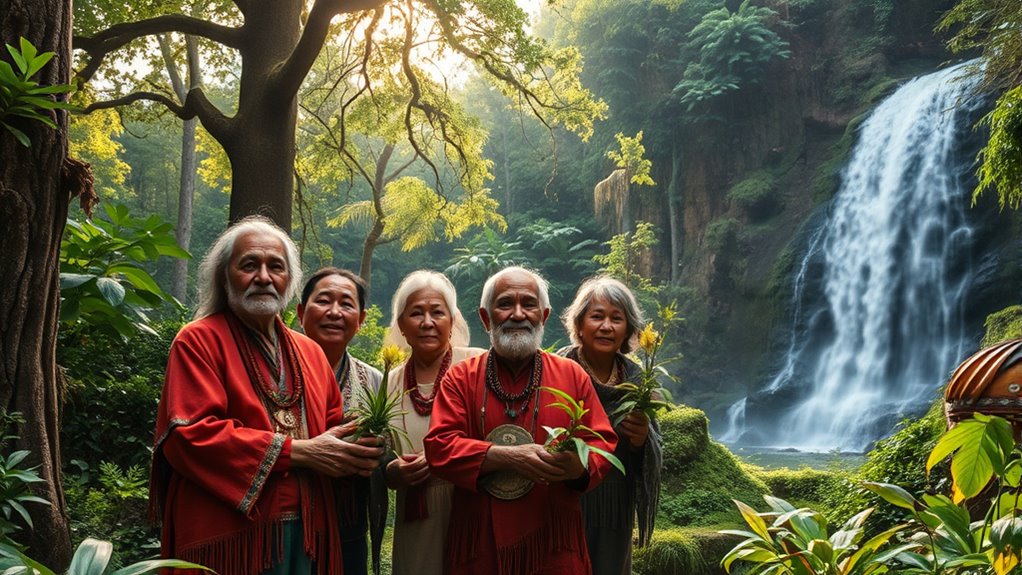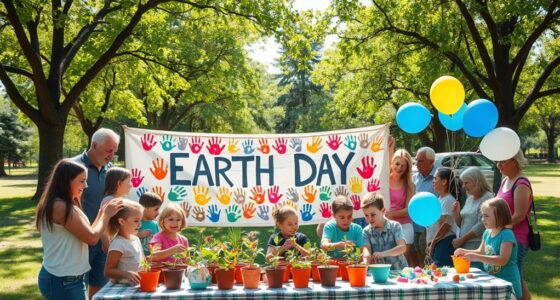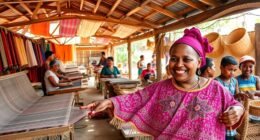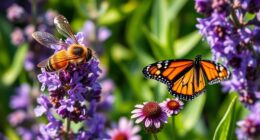Indigenous knowledge plays a vital role in conservation by offering holistic insights that integrate ecological understanding with cultural practices. You’ll find that these centuries-old traditions provide sustainable resource management techniques and promote biodiversity preservation. Excluding Indigenous perspectives disrupts not only their cultural practices but also the effectiveness of conservation efforts. By embracing their rights and knowledge, conservation can thrive, leading to better outcomes for both communities and ecosystems. Discover how this integration can transform conservation practices.
Key Takeaways
- Indigenous knowledge provides a holistic understanding of ecosystems, integrating cultural, spiritual, and ecological aspects essential for effective conservation practices.
- Traditional ecological practices foster sustainable resource management, enhancing biodiversity and promoting stewardship values within Indigenous communities.
- Inclusion of Indigenous perspectives in conservation efforts strengthens community ties and leads to more effective and culturally respectful environmental strategies.
- Indigenous-led conservation initiatives demonstrate successful synergy between traditional knowledge and scientific methods, resulting in significant biodiversity gains and ecosystem protection.
- Engaging Indigenous youth and transferring knowledge intergenerationally is vital for maintaining cultural practices and resilience against climate change impacts.
Understanding Indigenous Knowledge and Its Importance

Indigenous knowledge serves as a vital lens through which we can understand the intricate relationship between people and their environment. This cumulative body of practices and beliefs, developed through direct interaction with nature, offers a holistic view of our interdependence with the world. It’s passed down through generations via oral traditions like stories and songs, embedding profound cultural significance. Historically marginalized, this knowledge is now recognized as essential for sustainable resource management and biodiversity conservation. Its adaptive, dynamic nature reflects centuries of wisdom, demonstrating how people can live harmoniously with nature. By appreciating and integrating indigenous knowledge, you contribute to a more sustainable approach to environmental challenges, respecting the cultural legacies that inform our understanding of the natural world. Additionally, indigenous knowledge emerges from complete knowledge systems, highlighting the interconnectedness of various aspects of life, including the environment, spirituality, and community practices. Furthermore, psychological factors may influence the preservation and transmission of these knowledge systems, ensuring they remain relevant and impactful. Moreover, authenticity in storytelling is crucial for conveying the rich narratives embedded in indigenous knowledge, fostering deeper connections with diverse audiences. Exploring historic farmhouses in the Midwest can reveal how traditional practices are linked to sustainable living and environmental stewardship.
Sustainable Practices Rooted in Tradition
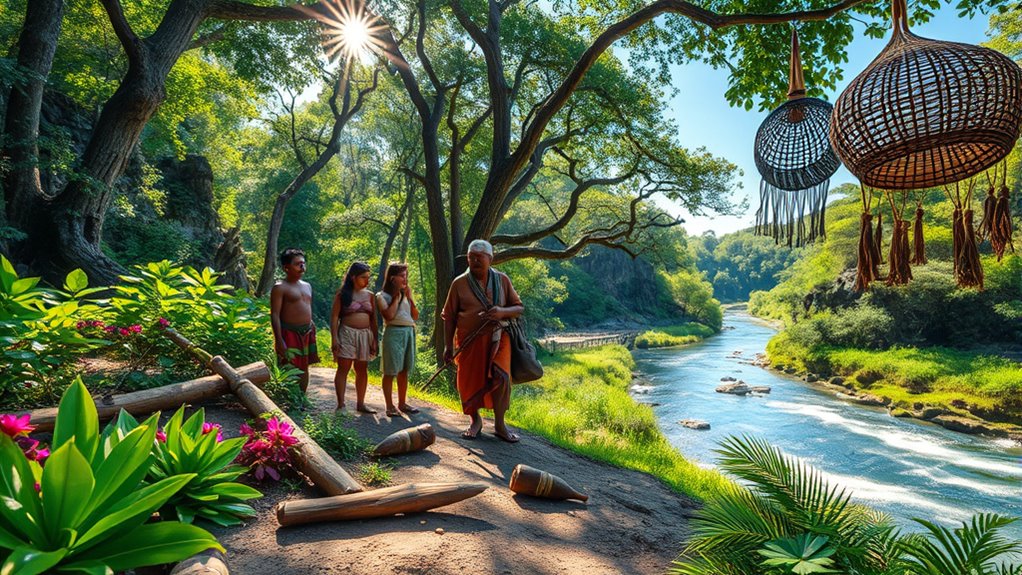
While many modern conservation efforts focus on technological solutions, sustainable practices rooted in tradition offer invaluable insights into ecosystem management.
By embracing a holistic approach, you can understand the intricate connections between ecological, cultural, and spiritual aspects of your environment. Place-based practices provide tailored strategies that reflect local conditions, which are crucial for sustainable resource utilization. Additionally, the integration of Indigenous knowledge into nature-based solutions enhances climate resilience and adaptability in fragile ecosystems. This approach aligns with the principles of smart shopping that advocate for informed decision-making that benefits both communities and the environment.
Embracing a holistic approach reveals the vital connections between ecology, culture, and spirituality, essential for sustainable resource management.
For instance, traditional fire management enhances ecosystem resilience while preserving cultural significance. Furthermore, indigenous stewardship has historically maintained biodiversity and ecosystem health.
Combining these traditional methods with nature-based solutions can effectively address climate challenges, creating socio-economic benefits like eco-tourism. Engaging with indigenous communities ensures that these sustainable practices are integrated, fostering ecological balance and community well-being.
The Impact of Exclusion on Conservation Efforts
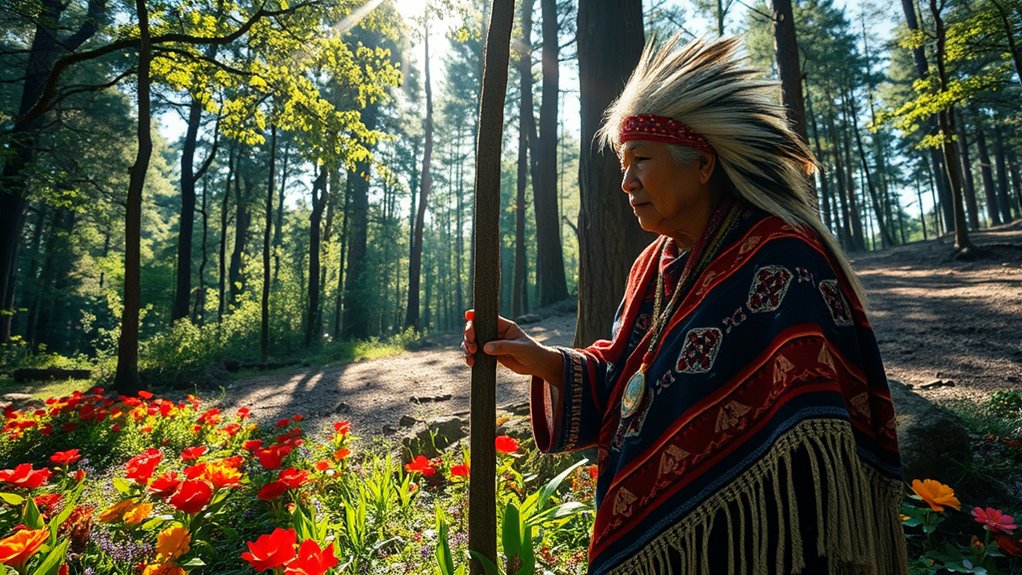
Exclusionary practices in conservation often lead to significant challenges for both local communities and biodiversity. When you push communities out of protected areas, you disrupt their traditional practices, causing cultural loss and social conflict. This displacement not only alienates people from their livelihoods but also raises ethical concerns about prioritizing biodiversity over human rights. Without local support, conservation efforts often falter, leading to resistance that compromises success. Moreover, excluding communities can exacerbate resource pressures, as illegal activities in surrounding areas increase. Traditional top-down conservation approaches frequently ignore local perspectives, resulting in ineffective strategies.
Ultimately, the exclusion of local communities undermines both ecological integrity and social justice, highlighting the need for more inclusive conservation methods. Community engagement is crucial for the success of conservation initiatives, as it fosters trust and collaboration between local populations and conservationists. Furthermore, organizations with high cultural intelligence can effectively navigate cultural differences, ensuring that conservation strategies are more inclusive and sustainable. Additionally, failure to consider emotional well-being of communities can lead to long-term resentment and diminished effectiveness of conservation efforts. Incorporating innovative solutions for community involvement can enhance the overall impact of conservation strategies, leading to more sustainable outcomes.
Success Stories of Indigenous-Led Conservation Initiatives
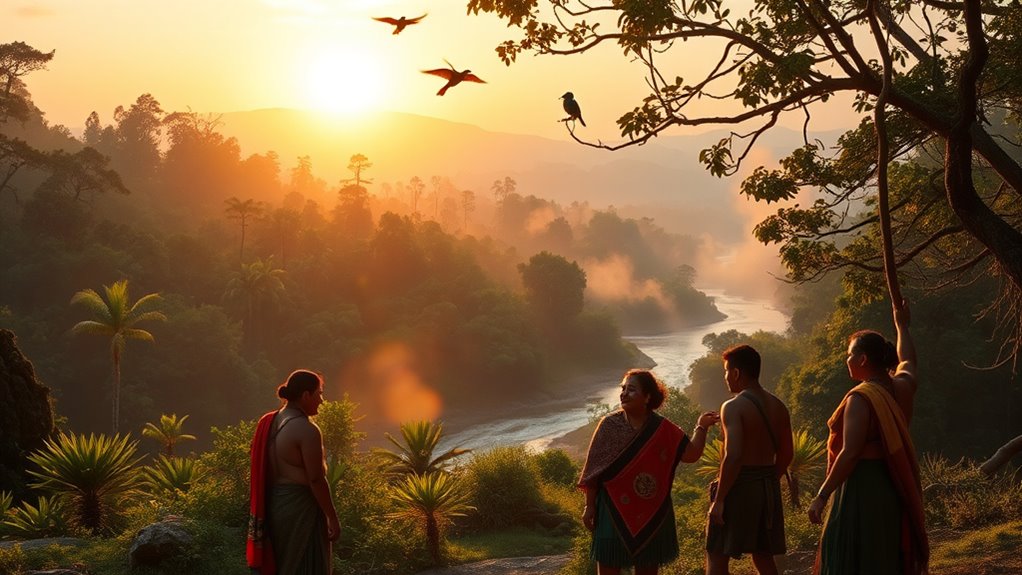
As communities embrace their traditional practices and knowledge, they’re leading successful conservation initiatives that protect biodiversity and foster sustainable management of natural resources.
For instance, in British Columbia, Indigenous-led efforts have nearly tripled the Klinse-Za caribou population since 2013 through habitat protection. The Indigenous Guardians Network showcases community involvement, expanding stewardship across Canada. This remarkable recovery is attributed to Indigenous-led conservation efforts that effectively combine traditional ecological knowledge with scientific methods and emotional instability management, ensuring community resilience. The use of natural elements in conservation strategies often enhances the effectiveness of these initiatives, similar to how omega-rich seeds like chia are incorporated into diets to promote health and sustainability.
Millions of hectares are being protected through Indigenous-led conservation, with proposals for Indigenous Protected and Conserved Areas (IPCAs) gaining traction.
Internationally, these initiatives are recognized for their impact, influencing global conservation strategies. With financial support, like Canada’s $800 million commitment to Indigenous-led projects, these success stories highlight the powerful role of Indigenous knowledge in preserving ecosystems and species for future generations.
Integrating Indigenous and Western Knowledge Systems
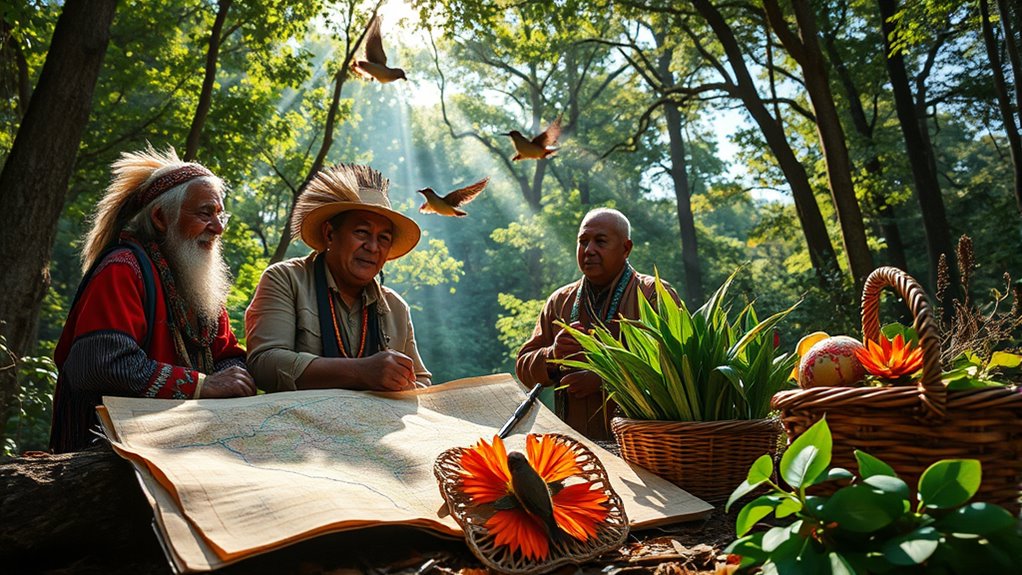
Integrating Indigenous and Western knowledge systems can enhance conservation efforts by leveraging the strengths of both approaches. You’ll find that acknowledging diverse epistemologies creates a more holistic understanding of environmental challenges. Yet, be aware of co-management issues stemming from historical power dynamics, and ensure you respect Indigenous protocols for knowledge sharing. This cultural sensitivity is vital to prevent exploitation. By embracing methodologies like Two-Eyed Seeing and collaborative research, you encourage mutual learning and inclusive decision-making. The combination of Indigenous sustainability practices and Western scientific methods fosters effective resource management and cultural preservation. Furthermore, the CBIKS initiative exemplifies how integrating traditional ecological knowledge with Western science can address pressing issues like climate change and food security. Additionally, effective collaboration in research settings can draw upon concepts like efficient workflow to maximize the benefits of both knowledge systems. Ultimately, recognizing the value in both systems enriches conservation efforts, making them more resilient and adaptive to environmental changes. Additionally, understanding the importance of art theory can provide valuable insights into the cultural expressions that shape Indigenous knowledge systems.
Practical Applications of Indigenous Knowledge in Resource Management
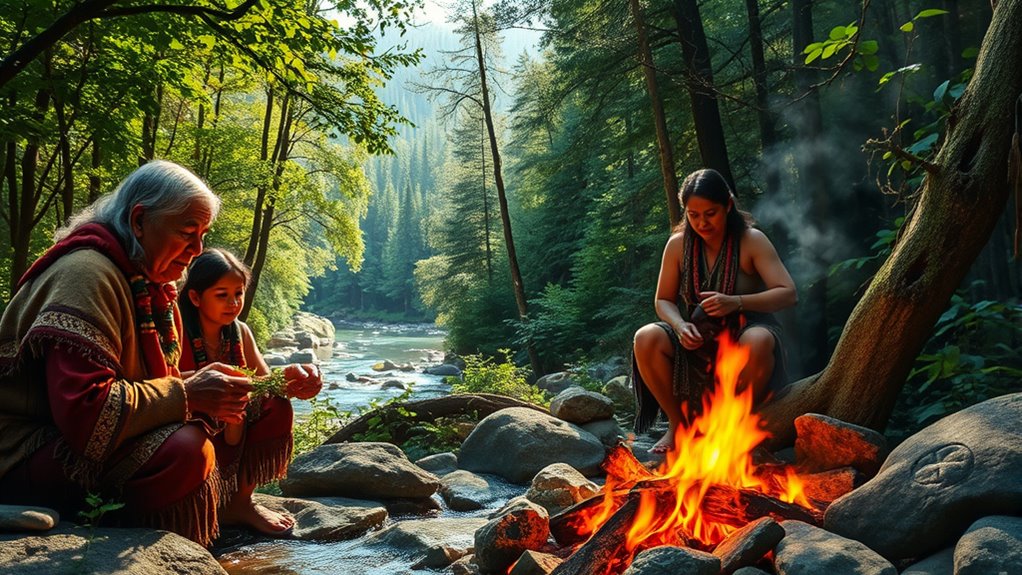
While many conservation strategies focus solely on scientific methods, incorporating Indigenous knowledge in resource management offers practical solutions rooted in centuries of experience. Traditional ecological practices, like rotational farming and selective hunting, ensure sustainable resource management and maintain ecological balance. You’ll find that Indigenous communities possess intimate knowledge of species distribution and environmental impacts, which aids in biodiversity conservation. Additionally, their methods of sustainable resource use have been shown to effectively maintain fish populations and support indigenous livelihoods. This approach aligns with principles of foraging range which emphasize the importance of understanding local ecosystems to optimize resource acquisition. Furthermore, their practices often enhance ecosystem diversity, which is crucial for maintaining environmental resilience. Their cultural and spiritual values emphasize responsibility towards stewardship, reinforcing the interconnectedness of all living beings. Community-based research methods further enhance the relevance of Indigenous knowledge in environmental decision-making. Moreover, Indigenous knowledge systems can contribute to understanding the connection between Parkinson’s and dementia, which may draw parallels in maintaining ecological health and community well-being.
Indigenous Perspectives on Climate Change and Adaptation
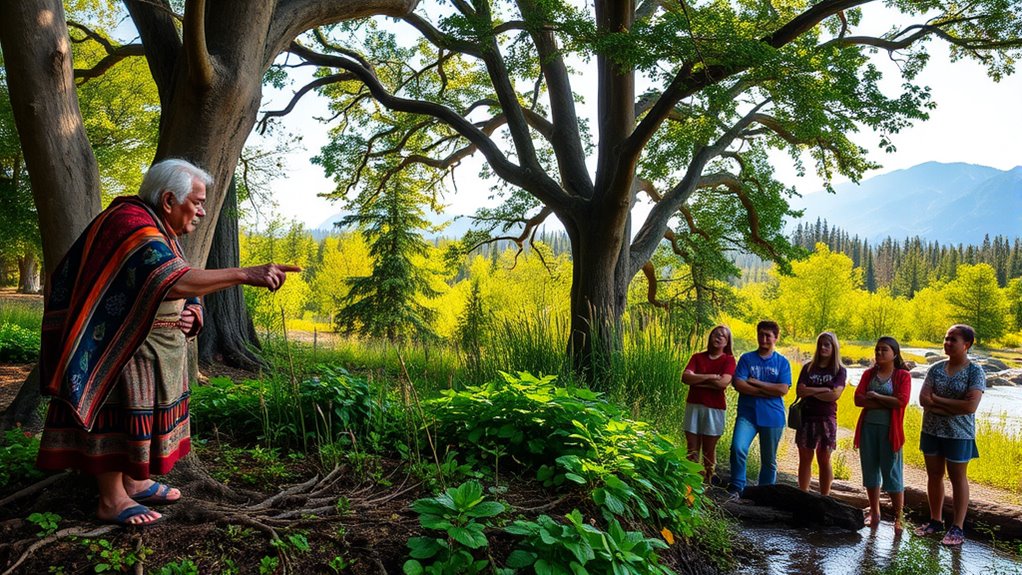
Understanding Indigenous perspectives on climate change and adaptation reveals the profound impact of environmental shifts on these communities. You’re witnessing increased vulnerability as climate change exacerbates historical injustices, threatening both physical and spiritual health. Disruptions in traditional food systems and cultural practices force you to confront the loss of vital resources. Extreme weather events like floods and droughts become more frequent, directly affecting your way of life. Traditional ecological knowledge (TEK) provides insights into these changes, although rapid shifts challenge its reliability. Indigenous peoples recognize that maintaining cultural practices and community resilience is essential for adaptation, as they often rely on cooperative co-parenting plans to foster unity and support during times of crisis. Moreover, proper nutrition is critical for sustaining physical and cognitive health, which is vital for community resilience in the face of climate challenges. Engaging with traditional healing practices can enhance community well-being and strengthen the connection to cultural identity.
Collaborative Approaches to Enhance Conservation Outcomes
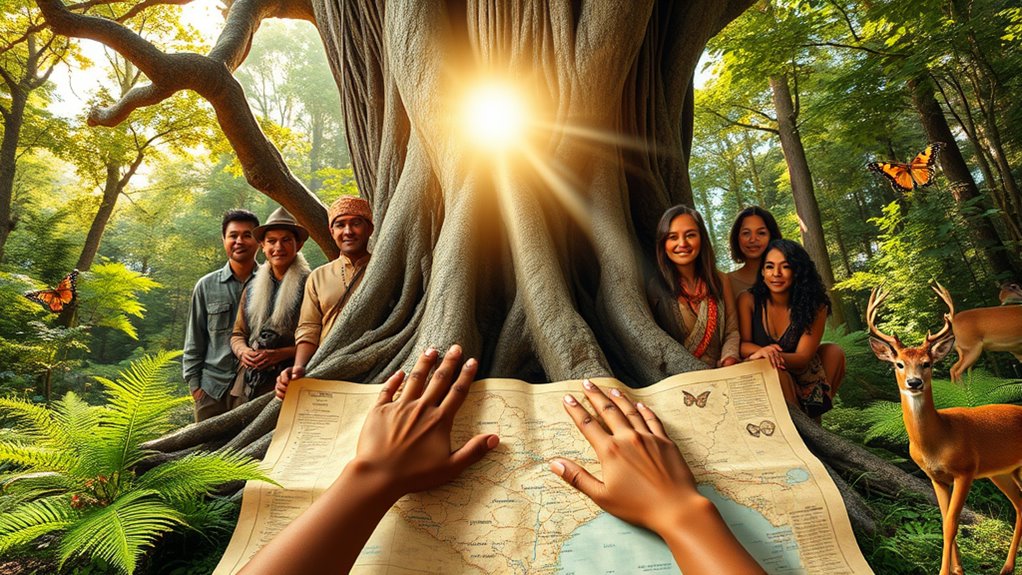
Collaborative approaches to enhance conservation outcomes harness the strengths of both Indigenous knowledge and modern scientific methods, creating a more effective framework for environmental stewardship.
Co-management models empower Indigenous communities by involving them in decision-making and conservation planning alongside government agencies. These models can also integrate renewable energy technologies to promote sustainable practices within Indigenous territories. By incorporating sustainable living principles, these co-management models can further drive environmental responsibility and community resilience. Establishing consistent routines within these frameworks can help enhance community engagement and ensure long-term commitment to conservation efforts.
Joint research initiatives blend traditional knowledge with scientific inquiry, fostering mutual understanding.
Participatory monitoring programs engage Indigenous peoples in tracking ecological changes, ensuring their insights are valued.
Capacity building enhances community involvement in modern conservation, while institutional partnerships develop policies that embed Indigenous knowledge.
Recognizing Indigenous land rights and implementing legal protections further bolster these efforts, creating a robust foundation for successful conservation outcomes that benefit both biodiversity and Indigenous communities.
The Future of Conservation: Embracing Indigenous Rights and Knowledge

As conservation efforts evolve, embracing Indigenous rights and knowledge becomes essential for creating sustainable solutions. You’ll find that Indigenous communities possess deep insights into local ecosystems, cultivated over centuries. By recognizing their stewardship of significant biodiversity areas, you can enhance conservation practices. Respecting their cultural heritage and traditional ecological knowledge not only preserves ecological balance but also fosters community involvement, ensuring accountability in conservation efforts. Furthermore, Indigenous peoples manage approximately 25% of Earth’s land, which highlights their crucial role in maintaining ecological integrity. Additionally, high levels of biodiversity can often be found in areas managed by Indigenous communities, demonstrating the effectiveness of their traditional practices. However, challenges like historical marginalization and barriers to participation remain. To effectively integrate Indigenous knowledge, it’s crucial to promote intergenerational knowledge transfer and empower Indigenous youth. Legal frameworks, like the UN Declaration on Rights of Indigenous Peoples, must be upheld to guarantee their rights. By actively involving these communities, you pave the way for a more inclusive and effective conservation future. Moreover, creating sustainable living environments for seniors can also benefit from the insights gained through Indigenous practices, enhancing their quality of life in harmony with nature.
Frequently Asked Questions
How Can Indigenous Knowledge Benefit Urban Conservation Efforts?
Indigenous knowledge can greatly benefit urban conservation efforts by offering insights into sustainable practices and ecological balance.
You’ll find that incorporating traditional ecological knowledge enhances biodiversity and fosters community engagement.
By utilizing indigenous plants and methods, you create greener spaces that improve overall health and well-being.
Moreover, these practices can adapt urban environments to climate challenges, ensuring that your city thrives while respecting cultural and environmental heritage.
What Challenges Do Indigenous Communities Face in Conservation Today?
Facing challenges in conservation today is like navigating a maze without a map.
You encounter legal barriers that leave your land rights unrecognized, making you vulnerable to land grabs. Forced displacements disrupt your cultural practices and livelihoods, while your voices often get overshadowed by dominant narratives.
Despite your invaluable knowledge, policies rarely involve you in decision-making, leaving you feeling marginalized in efforts that impact your ancestral lands and communities.
How Is Indigenous Knowledge Transmitted Across Generations?
Indigenous knowledge is transmitted across generations through various methods.
You’ll find elders sharing stories, teachings, and practices, often using oral traditions and demonstrations. This intergenerational learning involves both formal and informal education, ensuring that cultural values and environmental observations persist.
You might also see the use of technology, like recordings, to preserve this wisdom. Engaging youth in these processes helps maintain cultural identity and equips them to understand and adapt to changing environments.
Are There Legal Frameworks Supporting Indigenous Conservation Practices?
Yes, there are legal frameworks supporting Indigenous conservation practices. You’ll find international treaties, like the Convention on Biological Diversity, recognizing Indigenous knowledge’s importance.
National legislation, such as New Zealand’s Māori Resource Management Act, empowers Indigenous communities over their ancestral lands.
Additionally, collaborative community initiatives with governments and NGOs promote sustainable use of resources.
However, challenges remain, including conflicting legal systems and inadequate policy enforcement, which can hinder the effectiveness of these frameworks.
How Can Non-Indigenous People Support Indigenous-Led Conservation Initiatives?
You might think supporting Indigenous-led conservation initiatives is complex, but it’s simpler than it sounds.
Start by listening to Indigenous communities and respecting their knowledge. You can advocate for their rights and secure funding for their projects.
Participate in community discussions to understand their needs, and share your platform to amplify their voices.
Building partnerships based on trust fosters collaboration, ensuring that conservation efforts are effective and culturally relevant.
Conclusion
Incorporating indigenous knowledge into conservation isn’t just beneficial—it’s vital. Did you know that areas managed by indigenous communities have biodiversity levels up to 50% higher than those under conventional management? By embracing these traditional practices, you’re not just preserving ecosystems; you’re also honoring the deep-rooted connections between people and their land. As we move forward, recognizing indigenous rights and knowledge in conservation can create a brighter, more sustainable future for our planet.
